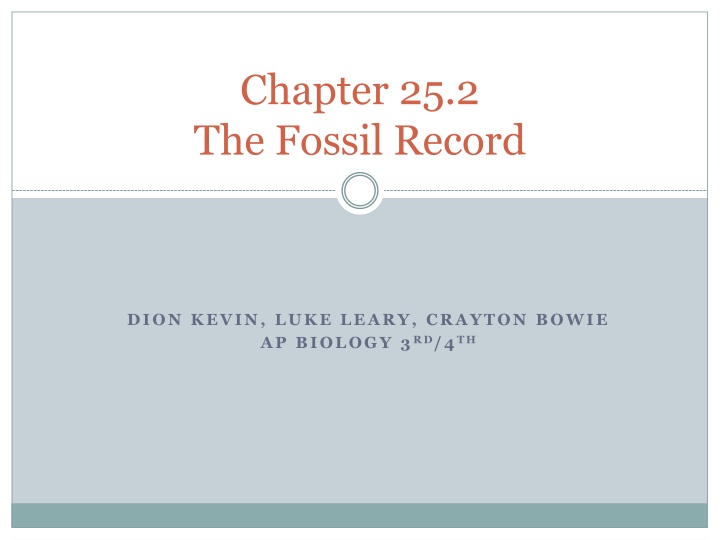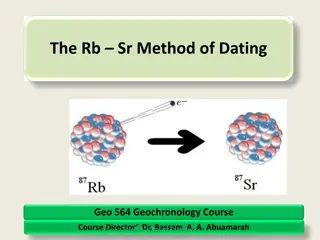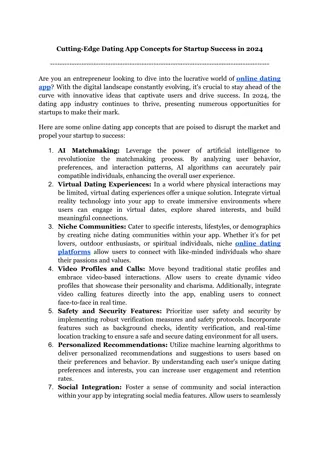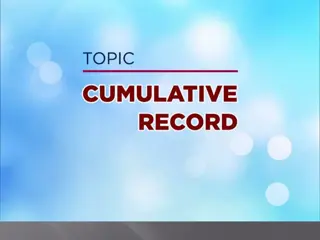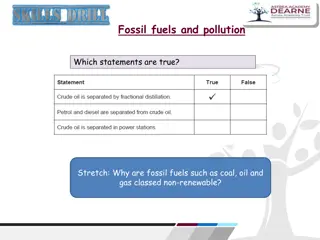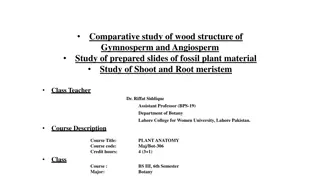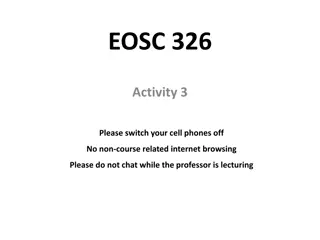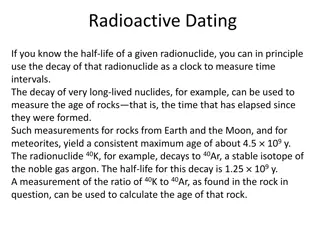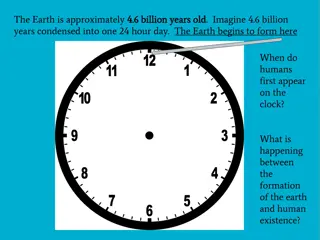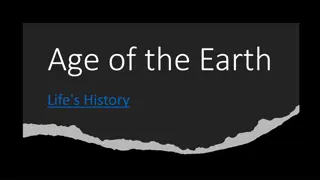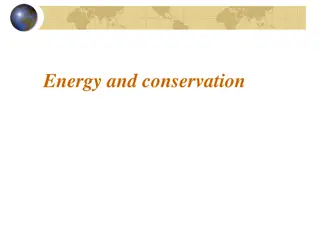Fossil Record and Dating Methods
Unveil the mysteries of the fossil record and learn how rocks and fossils are dated through radiometric dating and magnetism. Understand the origins of new organisms and the evidence found in fossils. Dive into the incomplete chronicle of evolutionary change and the gaps within the fossil record.
Download Presentation

Please find below an Image/Link to download the presentation.
The content on the website is provided AS IS for your information and personal use only. It may not be sold, licensed, or shared on other websites without obtaining consent from the author.If you encounter any issues during the download, it is possible that the publisher has removed the file from their server.
You are allowed to download the files provided on this website for personal or commercial use, subject to the condition that they are used lawfully. All files are the property of their respective owners.
The content on the website is provided AS IS for your information and personal use only. It may not be sold, licensed, or shared on other websites without obtaining consent from the author.
E N D
Presentation Transcript
Chapter 25.2 The Fossil Record DION KEVIN, LUKE LEARY, CRAYTON BOWIE AP BIOLOGY 3RD/4TH
Overview The Fossil Record Crayton How Rocks and Fossils are Dated Dion The Origin of New Groups of Organisms Luke
The Fossil Record Provides a window into the past Reveals changes and supports evolutionary ideas Fossils are primarily accumulated from Sedimentary rocks Layers are called strata Insects in amber Fossilized tree sap Mammals frozen in ice
The Fossil Record, cont. The fossil record offers an incomplete chronicle of evolutionary change The fossil record has gaps because of: Many didn t die in the right place @ the right time Some were destroyed by geologic processes Only a fraction have been discovered As a result, only creatures which were abundant and alive for a while bias the fossil record
How Rocks and Fossils are Dated Radiometric Dating- a method for determining the absolute ages of rocks and fossils, based on the half- life of radioactive isotopes. The rate of decay is expressed as a half life, the time required for 50% of the parent isotope to decay. Radiocarbon Dating- a specific method using carbon-14 to determine fossil age All organisms contain carbon, so this is most useful. However, it is only accurate up to 75,000 years Uranium-238 half-life: 4.5 billion years Carbon-14 half-life: 5730 years Potassium-40 half-life: 1.3 billion years
How Rocks and Fossils are Dated, cont. Magnetism During the formation of volcanic and sedimentary rocks, iron particles can align themselves with the Earth s magnetic field. The magnetic field of Earth has changed multiple times in its history, therefore alignment patterns can be matched with other areas of rock and the age can be determined. *It is important to note that much of fossil dating is with relation to other rocks*
The Origin of New Groups of Organisms Fossils provide evidence of the origin of new groups of organisms Along with amphibians and reptiles, mammals are considered tetrapods, with four limbs. Mammals with unique anatomical features that fossilize readily have a good fossil record. Mammals Single dentary bone 3 bones in middle ear single bone (stirrup) (hammer, anvil, stirrup) Incisors, canines, molars undifferentiated, single- Other Tetrapods composed of several bones pointed teeth
The Origin of New Groups of Organisms, cont. The fossil record shows that the unique features of mammals evolved in a series of gradual modifications in a group of tetrapods called synapsids. The features of mammals arose gradually in a previously existing group, the cynodonts.
Video http://www.youtube.com/watch?v=c_DCP4cLVNg
